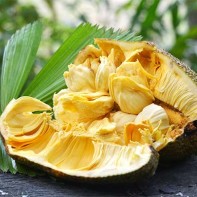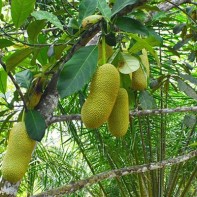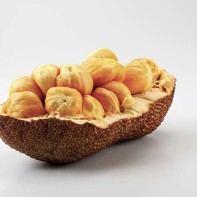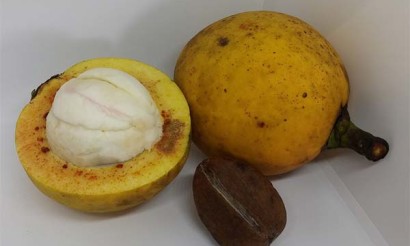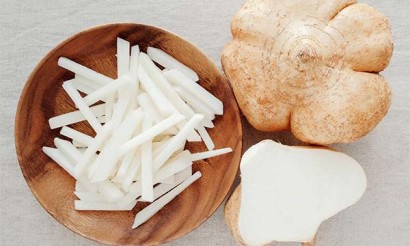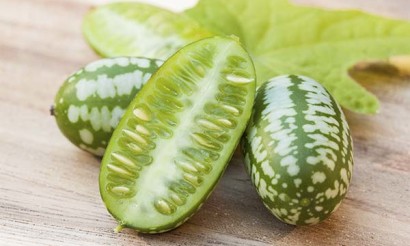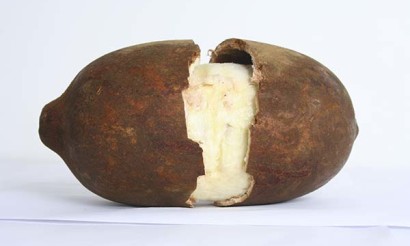Chempedak: what is this fruit and why is it useful?
Not all people on the planet are aware of the existence of an interesting in appearance and composition fruit from the tropics, called chempedak. To date, there are many varieties of it - about 150. All of them are eaten by the inhabitants of Asian countries, but have different flavors and aromas.
What is the fruit?
An exotic fruit, which has an outward resemblance to jackfruit, is a type of breadfruit. When ripe, it emits a powerful tantalizing musky aroma, making it similar to durian. Like the jackfruit, breadfruit, this exot belongs to the mulberry family. It grows in tropical climates. But, if you try hard, it is quite possible to grow it at home. Today, the fruit of the chapel is widely used in vegetarian diets as a meat substitute.
What it looks like
An evergreen tree capable of reaching more than 20 meters in height, it can produce large harvests several times a year. In the wild, the plant is not limited to 40 meters in height. It blooms with male and female flowers, which produce large, tasty fruits when pollinated. They are spherical or cylindrical in shape, ranging from 12 to 35 cm in length. In width, the size of the capper can be 15 cm. That is, some specimens simply amaze by their large size.
The rind of the fruit has a greenish, yellowish or brown color, all over the surface of which are convex, spots. The ripe fruit gives off a very pleasant aroma and the taste is juicy and sweet. However, such properties are possessed by cultivated species. In the wild form, chempedak is characterized by a sour taste and almost complete absence of flavor.
Where does it grow
The homeland of chempedak is Southeast Asia. In particular, Malaysia, where it was discovered. Warm climate and abundant rainfall are ideal for its growth. The tropical plant is now grown almost everywhere - in Indonesia, the Malay Peninsula, Thailand and other Asian countries. In Australia and Africa was acclimatized, so it is also widely used for cultivation on an industrial scale.
What is the usefulness of the cempedak fruit
Chempedak contains in its composition a lot of useful substances - vitamins and trace elements, as well as carbohydrates. It is the latter that give a person the necessary vitality and energy.

- The fruit is dominated by potassium, which has a beneficial effect on the cardiovascular organs and kidneys. Thanks to this, normalize blood pressure, which is especially important for hypertensive people. Chempedak is useful because of the large amount of potassium and for people suffering from dropsy due to heart or kidney failure.
- B vitamins have a positive effect on the functionality of the nervous system, treat depression, cope with stress, elevate mood and improve well-being. Regular intake of capecac segments will make a person more balanced, emotionally stable and calm.
- Vitamin C gives the opportunity to strengthen the immune system, improve performance. It allows you to effectively fight the flu, viral infections, inflammation and colds.
- Chempedac is very useful for diseases of the genitourinary system. Doctors strongly recommend including it in the diet of people suffering from such diseases.
- Calcium and iron, which are also abundant in the fruit, excellent for bone tissue, teeth, hair and the process of hematopoiesis. Therefore, the risk of developing anemia when consuming the tropical fruit is minimized, as well as frequent bone fractures and dental problems.
- Exotus pulp has a beneficial effect on the digestive organs. It improves intestinal peristalsis, fights constipation, naturally cleanses the body of toxins and harmful substances.
- Chempedac has a positive effect on the brain, so its daily consumption is recommended for intellectual workers.
- It is also recommended to add the pulp of the juicy fruit in the diet of hyperactive kids, because its beneficial effect on the nervous system is obvious.
- Regular consumption of the fruit improves metabolic processes in the skin, which makes the face skin fresh, smooth and healthy.
What harm can it do?
Chempedak should be consumed with caution and only in small quantities. It contains a lot of natural sugar, so people suffering from diabetes should refrain from the treat. Often it also causes allergic reactions, which makes it impossible for allergic people to eat it. For this reason, you should not give the juicy pulp to small children under the age of 3.
The first attempt to eat exotic fruits should be very careful, because the body of people in the northern latitudes is not accustomed to such food. It is necessary to monitor the subsequent state of the gastrointestinal tract and skin. If everything is all right, you can eat Capedac without fear.
This fruit is quite caloric. Therefore, people who are getting rid of excess weight should refrain from eating it. After a treat, you should stock up with clean, drinking water, because the sweet pulp subsequently causes thirst.
What is the right way to eat chempedak
In Asian countries, not only ripe, but also unripe fruits are eaten. In the latter case, they are used as a vegetable, preparing a variety of dishes. The ripe fruit is simply opened with your hands, taking out the segments. You can cut the fruit lengthwise, wearing gloves beforehand. The rind of the caped fruit contains latex, which is quite difficult to wash off if it gets on your hands. You can eat raw not only the pulp, but also the pips, which many people like even more.
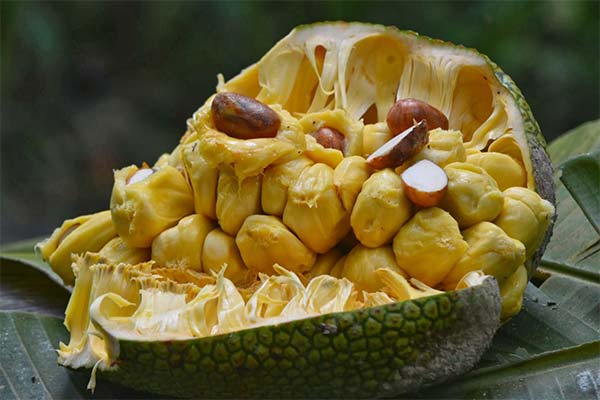
The tropical fruit has a very sweet taste, bordering on sugary. Therefore, it is not possible to eat it in large quantities at once. A maximum of 6-7 segments. But, this is quite enough to enjoy the amazing flavors that combine the properties of durian and jackfruit. Melt-in-your-mouth sweetness and delicious juiciness - that's how you can briefly describe the taste of the exot. The pips are also edible and useful when roasted and boiled. They taste like nuts and are great for a snack or breakfast.
What you can make with cheesecake
More often than not, the caper is eaten fresh. Often it is added to salads and desserts. It is worth noting that in each region the taste of the fruit can be very different from the rest. In some countries, the fruit has a mushroom flavor, which makes it possible to use it for the preparation of second courses, side dishes, soups. Unripe fruits that have not yet acquired a characteristic sweetness are used for this purpose. Segments fried in oil are considered a real delicacy. They boil the pulp in coconut milk, which allows you to get a very tasty, nutritious delicacy.
Almost all culinary experts of the world prefer to make desserts from chempedak. But in Asian countries, it is commonly prepared as a garnish for meat dishes. For this purpose, the pulp is roasted. The ripe fruit is also preserved in syrup, jams are made, truffles are made and added to ice cream. The seeds are milled and made into flour. And in Indonesia they even eat the rind, which is soaked in brine and spices and then roasted. Such a fruit dish is an excellent alternative to meat. Therefore, in poor locals it forms the basis of the diet.
Traditional medicinal uses
In the recipes of folk medicine use not only the fruit and seeds, but also the leaves, bark and stems of the chempedak tree. Valuable biochemical compounds endow medicines with such qualities:
- antiviral;
- antibacterial;
- antifungal.
Decoction of the roots is widely used to treat asthma, intestinal disorders, hypertension, diseases of the skin. Also its consumption can reduce anxiety, restlessness, get rid of stress and depression. Unripe fruits can cure diarrhea, and ripe ones - constipation.
The leaves of the capelin are used to heal wounds, cuts, and abrasions. To do this, they are heated and applied to the affected area.
Roasted exotic seeds can help women cure infertility - it is enough to take them in food 2 times a day. In general, in Asian countries, some parts of the chempedac are widely used to treat women's diseases, fast recovery after childbirth, eliminate painful feelings during the critical days. Poultices from the roots of the tree can get rid of pain in the hands and feet, as well as ulcers on the skin.
Cosmetic applications
Oil from chempedac has the property of improving the regeneration of skin cells, contributing to its rapid regeneration. Therefore, in cosmetology it is widely used to produce creams, gels, cleansers to nourish and restore the skin. After regular use of such means the skin gets a healthy look, smoothness and silkiness. Remedies on the basis of chempedac contribute to the rejuvenation of the skin, preventing aging.
Oriental women often use the juice and pulp of the fruit to make homemade face masks, scrubs, or compresses. They use the caped fruit along with other tropical fruits or vegetables. Natural cosmetics allow them to keep the skin young and healthy looking.
How to grow the caper.
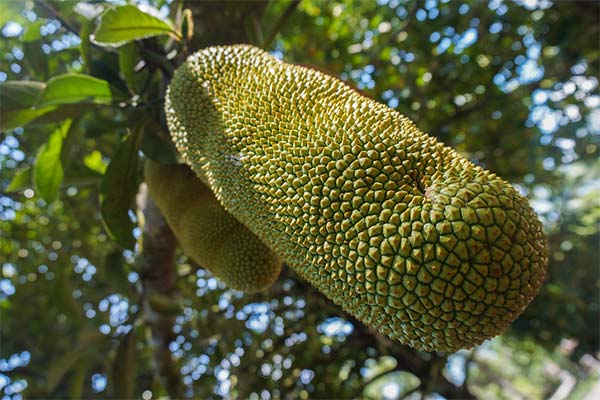
Today, the amazing tropical fruit is grown everywhere in Asian countries on an industrial scale. However, for decorative purposes, it can be grown at home as well. The main thing is to create a room, preferably in a greenhouse, temperature and humidity close to tropical. The temperature for the successful development of the plant must be more than 20 degrees Celsius and the humidity relatively high. But, to exclude the risk of death of the fruit tree, it should not be overwatered. Growing thanpedak is quite fast, so in a few years you can get a full-fledged tree.
The soil should be breathable, light and nutritious. A purchased citrus pot will do just fine. It is obligatory to arrange a drainage cushion of claydite at the bottom of the pot. Planting seeds can be in a fairly large pots - about 0.5 liters, as the plant will quickly enter the stage of active development. Set the pots on a southern window sill, providing protection from draughts. If there are heating devices in the room, to increase humidity, they should be constantly covered with a damp cloth. In the first year of life, the plant is transplanted several times - 3 or 4. Later, its growth slows down a little, so transplanting can be performed only once a year.
During the flowering stage, the plant should be pollinated manually with a brush. The plant perfectly tolerates constant sunlight, but, it is still recommended to cover it a little at the height of noon. The death of the growing caper can provoke a drop in temperature to plus 5 degrees and a rise to plus 40 degrees. Even a brief cold spell will have a negative effect on the development of the exotic tree - it will shed its leaves. It is sprayed daily, thus providing the necessary level of humidity. It is good if there is a stationary humidifier in the house. Responds well to foliar feeding on the leaf. They are carried out no more than 1 time a month.
Growing through the seed allows you to wait for the fruit-bearing tree on the 5th or 6th year after sowing. Under room conditions, their diameter will not exceed 10-15 cm. Of course, compared to conventional fruits, they will seem tiny. But how decorative the tropical tree will look at home in the stage of flowering and fruiting can be found out only by growing the capedak yourself in accordance with the agro-technical rules.
«Important: All information on this site is provided solely for introductory purposes only. Before applying any recommendations, consult a health care professional. specialist. Neither the editors nor the authors shall be liable for any possible harm caused by materials."

